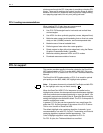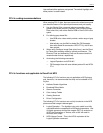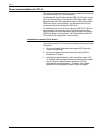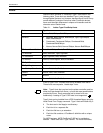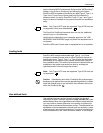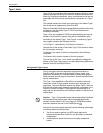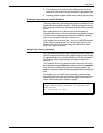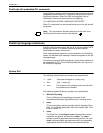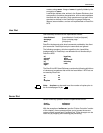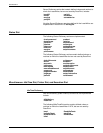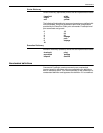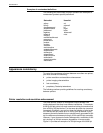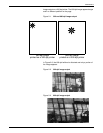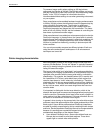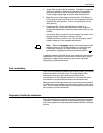
POSTSCRIPT
2-6 XEROX DOCUPRINT NPS GUIDE TO USING PAGE DESCRIPTION LANGUAGES
PostScript with embedded PJL commands
PostScript files created for some Hewlett-Packard printers and other
compatible printers include PJL commands that specify the use of a
PostScript interpreter. DocuPrint NPS can recognize a file as
PostScript if it starts with code similar to the following:
^[%-12345X@PJL ENTER LANGUAGE=POSTSCRIPT
Other PJL commands can be included at the start of the job, but will
be ignored.
Note: PJL commands in locations other than at the start of the
PostScript job will cause the job to be aborted.
PostScript language extensions
DocuPrint NPS emulates some, but not all, of the LaserWriter II NTX
(containing version 47 of Adobe PostScript) product-specific
functionality as noted in this section.
When unimplemented operators are encountered in the PostScript
master, the standard error message “Undefined” appears on the job
messages page.
This section contains PostScript dictionary entries that are defined in
the LaserWriter II NTX. These PostScript definitions are not part of
the PostScript language.
System Dict
The following System Dictionary operators are implemented:
The following System Dictionary operators are implemented:
• ISOLatin1Encoding
This is a 256-entry font encoding array based on the
International Standards Organization Latin1 encoding vector.
• eexec
This is a decryption operator typically used for decoding Type 1
fonts. For a detailed description, refer to the Adobe Type 1 Font
Format, version 1.1.
• cexec
The DocuPrint 1.5 and higher cexec implementation simply
consumes and ignores the data fed to cexec. The cexec
operator is used to download machine code patches. As such,
cexec is Motorola 6800 cpu-dependent and is not completely
implemented. DocuPrint NPS does not handle PostScript
• =print {dup type /stringtype ne {=string cvs}}
• Run {dup == flush run}
• error The common error handling routine used by all of
the standard error handlers



